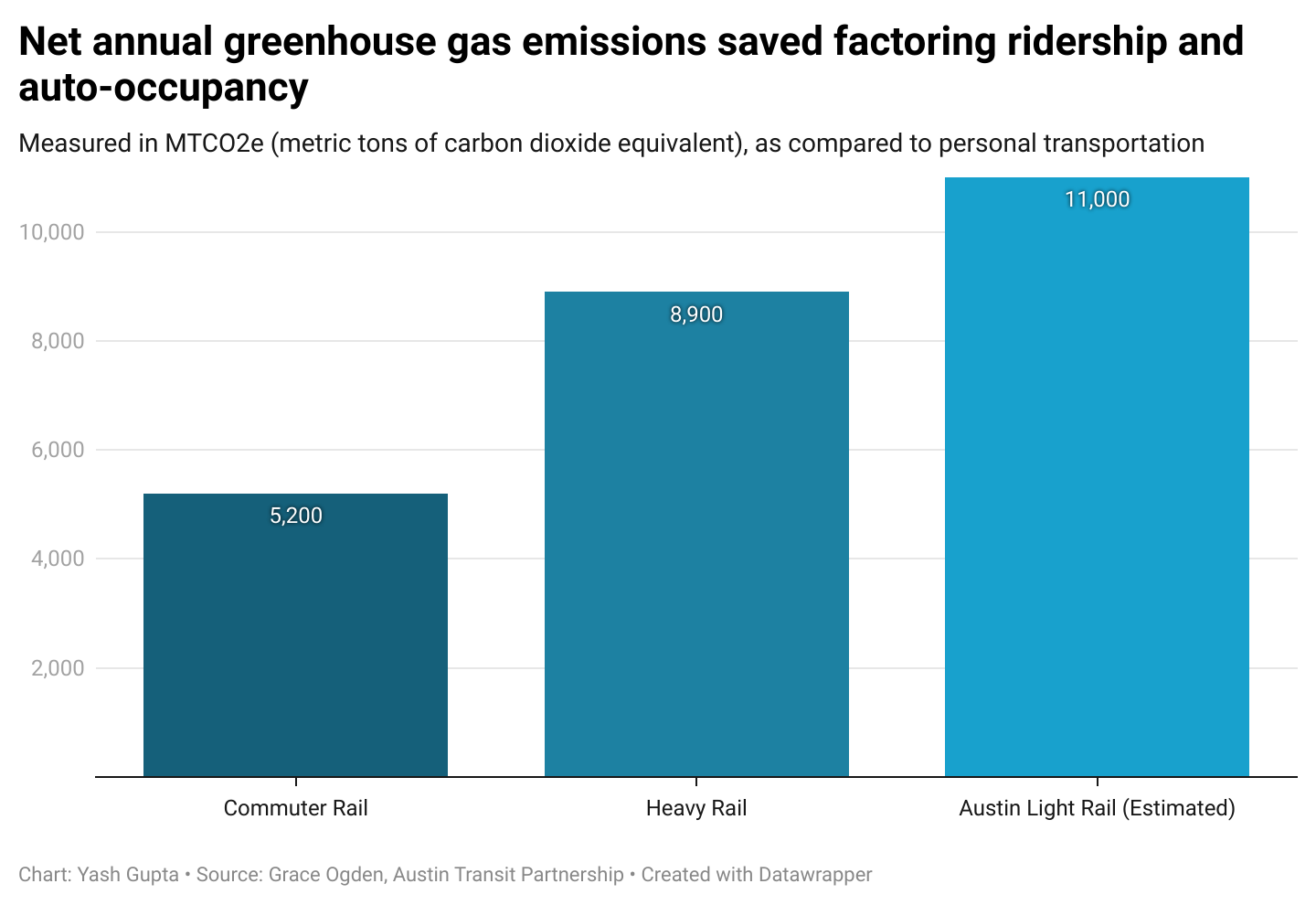Your cart is currently empty!
City commissioners discussed the potential impacts of constructing and maintaining phase one of the Austin light rail in a March 5 meeting, with a focus on the environment and historically underserved areas.
The project is part of a $7.1 billion infrastructure package called Project Connect that would expand public transit options across the city. Austin Transit Partnership, which oversees the project, released a Draft Environmental Impact Statement on Jan. 10, reviewing how the project would interact with the urban and natural environment. The 9.8-mile light rail is expected to improve mobility and decrease travel time in high-traffic corridors such as Guadalupe and Lavaca streets, South Congress Avenue and East Riverside Drive, according to the report.
The light rail is a key part of the city’s localized response to climate change and supports the 2040 Austin Climate Equity Plan, which is directed at mitigating future environmental risks while acknowledging past harm.
Environmental engineering senior Suveda Sannidhi said it is important to consider the short-term and long-term impacts of infrastructure projects within local communities.
“We live in a society that is so car-dominated,” Sannidhi said. “Any transition to public transportation or a shared rail system is beneficial to our progress that we’re making, but in that process, we do still have to consider the communities that are being served.”
Transit access and equity, which the commissioners analyzed heavily in the report, was of particular concern for communities in East Austin who were “harmed by past discriminatory practices.”
Commissioner Richard Brimer said a historic example was the 1928 City Plan, or the 1928 Master Plan, which forced minority communities to move to the east side of Austin. The divide solidified after the city constructed Interstate 35 adjacent to East Avenue in 1962.
With increased connectivity to destinations including UT, downtown and Lady Bird Lake, the partnership intends to make public transit an “attractive alternative” to driving. Planners estimate the light rail could support around 29,000 trips each weekday.
Across the United States, transportation accounts for 28% of all greenhouse gases emitted in the country, more than any other category, according to the Environmental Protection Agency. Pollutants released into the air from gasoline-powered vehicles can negatively impact health, according to the EPA. The light rail would remove approximately 1,061 tons of carbon dioxide equivalent per year, according to partnership estimates.
Austin Energy will supply the power for the light rail trains, according to the report. While Austin Energy still maintains some energy generation sources that produce greenhouse gas emissions, the utility plans to move to all carbon-free sources by 2035.
“The potential emission reductions will greatly outweigh any long-term operational (greenhouse gas) emissions since the system will be using renewable, carbon-free sources in the long term,” said C. Tyler Dick, an assistant professor in the Cockrell School of Engineering with expertise in transportation engineering, in an email.
Dick said the numbers are difficult to put into context, as the light rail project would reduce daily vehicle miles traveled in Austin by less than 0.1%. Transportation-related emissions, greenhouse gases and other pollutants in Austin could be expected to decrease by a similar 0.1%, he said.
“The light rail project will not decrease truck traffic through Austin, and it is heavy trucks that produce a disproportionate share of emission per vehicle-mile traveled,” Dick said.


